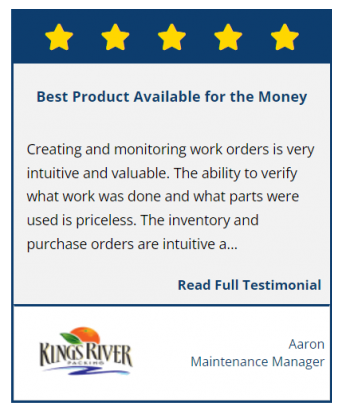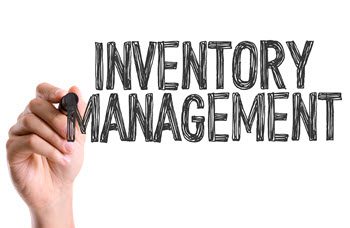 Optimizing Maintenance Parts Management requires a delicate balance between inventory cost and parts availability. Companies strive to keep sufficient stock levels to prevent equipment downtime, while also minimizing the expenses associated with excess inventory. Achieving this balance is vital to ensuring equipment reliability and efficient operations. In this article, we explore the realm of true optimization and offer valuable insights on how organizations can overcome the challenges of maintenance parts management. By identifying hidden efficiencies and implementing strategic solutions, organizations can attain profitability, stay within budget, and maintain the highest standards of equipment performance.
Optimizing Maintenance Parts Management requires a delicate balance between inventory cost and parts availability. Companies strive to keep sufficient stock levels to prevent equipment downtime, while also minimizing the expenses associated with excess inventory. Achieving this balance is vital to ensuring equipment reliability and efficient operations. In this article, we explore the realm of true optimization and offer valuable insights on how organizations can overcome the challenges of maintenance parts management. By identifying hidden efficiencies and implementing strategic solutions, organizations can attain profitability, stay within budget, and maintain the highest standards of equipment performance.
Maintenance Parts: Key Considerations

Maintenance parts are an essential component of any equipment or machinery as they play an important role in ensuring the equipment’s longevity and reliability. Cost, quality, compatibility, and parts availability are all aspects that influence the decision and selection of maintenance parts.
Costs: One of the most important factors that influence the choice of maintenance parts is cost. Typically, organizations aim to reduce expenses while increasing the efficiency and effectiveness of their equipment. However, achieving a balance between cost-effectiveness and quality is important, since using low-quality parts might result in frequent breakdowns and increased expenditures in the long run.
Quality: This is another important thing to consider while selecting maintenance parts. High-quality parts are long-lasting and reliable, ensuring that equipment runs properly and effectively for a longer period of time. Low-quality parts, on the other hand, are susceptible to breakdowns and malfunctions, resulting in greater downtime and reduced productivity.
Compatibility: Another important element to consider while purchasing maintenance parts is compatibility: Parts must be compatible with the equipment, and deviations from the recommended standards might result in reduced efficiency and greater breakdowns. Organizations must ensure that the maintenance parts they select are compatible with the equipment and that any variations from the recommended specifications are corrected prior to installation.
Parts Availability: In some cases, certain parts may not be readily available in the market, resulting in extended downtime and increased expenses. To avoid this, organizations must plan ahead and ensure that they have a reliable source of maintenance parts that can be obtained quickly in the event of an emergency.
Maintenance Parts Strategy
A maintenance spare parts strategy is a plan or approach for managing spare parts for equipment maintenance. It includes the processes, systems, and tactics used to ensure that spare parts are available when needed and that inventory levels are optimized for cost and efficiency.
A maintenance spare parts strategy typically includes:
Inventory management: The purpose of inventory management is to maintain track of inventory levels, usage patterns, and lead times to ensure that necessary spare parts are readily available and overstocking is minimized.
Cost management: This involves balancing the cost of holding inventory, including storage and handling costs, against the cost of stock shortages, to minimize the total cost of ownership.
Lead time management: This includes taking into account lead times to ensure that spare parts arrive on schedule, saving downtime and lost productivity.
Predictive maintenance: This involves using data and analytics to predict when maintenance is required, thereby reducing the need for stocks on hand.
Risk management: This entails analyzing inventory management risks such as stock shortages, obsolescence, and stock damage and implementing solutions to minimize these risks.
Supplier management: This involves developing strong relationships with suppliers to ensure that the appropriate spare parts are delivered on time, at a competitive price, and at a high-quality level.
Technology integration: This involves using technology, such as inventory management software, such as computerized maintenance management system (CMMS) software, to automate inventory tracking and acquire real-time insights into inventory levels and usage patterns.
An effective maintenance spare parts strategy helps organizations in minimizing downtime and lost productivity, lower total cost of ownership, and improve equipment efficiency. Organizations that adopt a systematic approach to spare parts management can ensure that they have the right replacement parts on hand when they are needed, maximizing equipment performance and reliability.
Spare Parts Inventory Management
 Spare Parts Inventory Management is the process of planning, coordinating, and controlling the storage, distribution, and use of spare parts and supplies used in maintenance activities. This includes creating procurement procedures, developing inventory management systems, and ensuring the timely availability of parts to support maintenance operations. The purpose of maintenance organization management is to maximize resource utilization while minimizing downtime and expenses associated with maintenance tasks.
Spare Parts Inventory Management is the process of planning, coordinating, and controlling the storage, distribution, and use of spare parts and supplies used in maintenance activities. This includes creating procurement procedures, developing inventory management systems, and ensuring the timely availability of parts to support maintenance operations. The purpose of maintenance organization management is to maximize resource utilization while minimizing downtime and expenses associated with maintenance tasks.
Spare Parts Inventory Management includes defining the minimum and maximum levels of inventory for each spare part depending on usage patterns, lead times, and other factors. This helps to ensure that the proper parts are available when they are needed, without keeping excessive stock levels on hand, which could waste precious resources.
Another crucial element is the creation and implementation of proper storage and handling procedures. This includes selecting the best storage locations for various types of parts based on size, weight, and frequency of use, as well as establishing procedures for rotating stock, labeling parts, and managing obsolete or excess inventory.
Effective Spare Parts Inventory Management requires strong communication between maintenance and procurement teams, as well as regular evaluation and analysis of inventory data to spot patterns and make necessary adjustments. This helps to ensure that maintenance procedures are carried out efficiently and efficiently while minimizing costs and increasing equipment lifespan.
Streamlining Maintenance Processes with Effective Parts Warehousing and Logistics
Maintenance parts warehousing and logistics refer to the processes and systems involved in storing, handling, and distributing spare parts and supplies used in maintenance activities. This includes spare part storage as well as the systems and processes used to manage inventory levels, procurement, and delivery of parts to maintenance teams.
Parts for effective maintenance Warehousing and logistics are important to ensure the efficient and effective use of spare parts in maintenance operations. This can help to reduce downtime, lower maintenance costs, and increase equipment performance and reliability.
Maintenance parts warehousing and logistics typically include the following components:
* Inventory control, including minimum and maximum inventory levels and reorder points
* Procurement processes and systems, including supplier selection and contract management
* Storage and handling procedures, including the location and organization of spare parts storage
* Parts utilization, including usage patterns and cycle times
Maintenance management systems and processes, including work order management and spare parts tracking.
Organizations can optimize their overall maintenance operations and ensure that spare parts and supplies are readily available when needed by improving maintenance parts warehousing and logistics. This can include integrating new technologies and systems, as well as continuously improving processes and procedures to keep up with changing maintenance operations needs.
Maximizing Maintenance Efficiency through Change Management
The process of enabling and facilitating changes in the management of spare parts and supplies used in maintenance activities is referred to as change enablement in maintenance parts. Implementing new technologies, processes, or systems to improve the efficiency and effectiveness of maintenance operations is one example.
Change enablement in maintenance parts aims to help organizations in keeping up with the changing needs of their equipment and operations, as well as continuously improve their maintenance processes. Organizations can reduce downtime, lower maintenance costs, and increase equipment reliability and performance by enabling change. For example, this might include a variety of maintenance processes, such as implementing new software solutions for tracking spare parts inventory levels or changing procurement processes to assure the timely availability of parts.
In some circumstances, change enablement in maintenance parts may also entail revamping existing practices and systems, such as replacing manual operations with automation or restructuring storage and handling procedures to improve efficiency. The particular improvements required will be determined by the organization’s unique goals and challenges, as well as its maintenance operations.
Overall, change enablement in maintenance parts is an important component of effective maintenance operations, helping organizations continuously improve their processes and ensuring the efficient and effective use of spare parts and supplies.
Benefits of Sourcing and Refurbishing Parts
 The importance of maintenance in keeping any machinery, equipment, or facilities in good operating condition cannot be overstated. It is essential to have the necessary parts on hand while performing preventive, predictive, or corrective maintenance. This is where effective maintenance parts management comes in.
The importance of maintenance in keeping any machinery, equipment, or facilities in good operating condition cannot be overstated. It is essential to have the necessary parts on hand while performing preventive, predictive, or corrective maintenance. This is where effective maintenance parts management comes in.
Sourcing is one of the primary aspects that can impact the success of maintenance parts management. Sourcing is the process of procuring the parts, materials, and equipment required for maintenance work. The right sourcing strategy can ensure that the maintenance team has access to the correct parts at the correct time and at the right prices.
Some of the advantages of optimizing maintenance parts management through effective sourcing are as follows:
Increased availability of parts: With the right sourcing strategy in place, you can have access to a large pool of suppliers and parts, increasing your chances of acquiring the right part when you need it. This can save downtime and increase overall equipment productivity.
Cost savings: Effective sourcing can help in negotiating better pricing for parts and lowering total maintenance costs. Working with reputable vendors and comparing pricing allows you to get the greatest deal and save the most money.
Improved quality: Sourcing from reputable vendors helps ensure that the maintenance parts are of high quality and meet the necessary standards. This can help to increase the equipment’s lifespan and performance.
Increased efficiency: Maintenance work can be completed more quickly and efficiently if the necessary parts are readily available. This can help to minimize total maintenance time and improve equipment productivity.
Improved supplier relationships: Building strong relationships with suppliers can benefit maintenance parts management. Working closely with suppliers allows you to have a deeper understanding of their capabilities and strengths, as well as negotiate better terms and conditions. This can help in increasing the overall reliability and quality of the parts supplied.
Better inventory management: Effective sourcing can help to optimize inventory management. By keeping track of the parts and supplies needed for maintenance work, it is possible to ensure that the right parts are readily available when needed and to avoid overstocking or understocking.
Reduced risk: Sourcing from reliable suppliers can help to lower the chance of equipment failures and total downtime. This can help to improve the equipment’s overall reliability and performance.
Improved safety: By sourcing high-quality parts and supplies, it is possible to reduce the risk of equipment failure and improve the overall safety of the facilities and equipment.
Compliance with regulations: Effective sourcing can help to ensure that the parts and supplies used in maintenance work comply with the necessary regulations and standards. This can help to reduce the risk of penalties and legal action.
Maximizing Maintenance Parts Management through Inventory Planning
One key aspect of effective maintenance parts management is inventory planning.
Inventory planning involves forecasting future demand for maintenance components and ensuring sufficient quantities are available when needed. This necessitates a careful balance between maintaining too much inventory, which ties up capital and incurs storage and handling costs and carrying too little inventory, which can result in stockouts and costly downtime.
Maximizing maintenance parts management through inventory planning requires the use of best practices and technology. Some important things that you can do include:
Accurate forecasting: Accurate forecasting is the foundation of effective inventory planning. This requires analyzing historical data, considering the effects of seasonal demand, and considering the effects of any planned equipment upgrades or maintenance projects.
Safety stock: The excess inventory carried to accommodate for uncertainty in demand and supply is known as safety stock. A well-planned safety stock ensures that there is always adequate inventory to meet demand, even during unplanned events.
Reorder points: Reorder points are the predetermined inventory levels at which an organization should reorder maintenance parts. This helps to ensure that inventory is maintained at optimal levels and reduces the risk of stockouts.
Continuous improvement: Inventory planning is a continuous process of improvement, not a one-time event. Organizations should assess and adapt their inventory planning processes on a regular basis to ensure that they are maximizing the efficiency of their maintenance parts management.
Consignment inventory: Consignment inventory is a type of inventory management in which the maintenance parts supplier holds the inventory and only charges the organization when the parts are needed. This reduces the amount of capital tied up in inventory and provides organizations with more flexibility in terms of the inventory they hold.
Cross-functional collaboration: Inventory planning should not be restricted to a single department or individual. Instead, cross-functional collaboration between departments such as procurement, maintenance, and operations should be used to ensure that all aspects of the organization are included during the inventory planning process.
Performance metrics: Performance metrics can be used to track inventory planning effectiveness and identify areas for improvement. Metrics such as inventory turns, stockout rate, and inventory carrying cost can provide useful insights into the inventory planning process’s performance.
Technology: Many inventory planning procedures, from forecasting to reordering, can be automated using technology. Inventory management software, such as computerized maintenance management systems (CMMS), can provide firms with real-time visibility into inventory levels and assist them in making informed decisions about whether to repurchase items. CMMS also streamlines maintenance processes and provides data on equipment and inventory status, enabling organizations to make informed decisions about when to order replacements or restock items.
Maximizing maintenance parts management through inventory planning is more important than ever in today’s fast-paced business environment. Organizations may improve equipment availability, minimize downtime, and increase operational efficiency by implementing a strategic and data-driven approach. This can help organizations in remaining competitive, increase customer satisfaction, and ultimately drive business success.
Maintenance Parts Management: Essential KPIs
Maintenance Parts Management is a crucial aspect of any maintenance operation, as it determines the efficiency and effectiveness of the maintenance process. To ensure that repair parts are managed effectively, key performance indicators (KPIs) that are essential to the maintenance process must be tracked and measured. These KPIs help organizations understand the availability, cost, and usage of maintenance parts, as well as the effectiveness of their ordering and inventory management processes. Some common KPIs for maintenance parts management include parts availability, lead time, inventory turnover, cost per maintenance task, maintenance task completion time, stockout rate, stock holding cost, parts utilization, order fulfillment accuracy, and order processing time. By tracking these KPIs, organizations can identify areas for improvement and optimize their maintenance parts management process to ensure that their assets are well-maintained and in good working order. Additionally, the use of a Computerized Maintenance Management System (CMMS) can help organizations automate the tracking and analysis of their maintenance parts KPIs, providing real-time insights and streamlining their maintenance operations.
Maximizing Maintenance Efficiency with Cutting-Edge Technology
Maintenance Parts Management is an essential component of efficient asset management and maintenance operations. Organizations must have a dependable and efficient process for managing the procurement, storage, and use of maintenance parts to ensure that assets are well-maintained and in good operational order. Technology advancements have significantly increased the efficiency and effectiveness of maintenance parts management in recent years, providing organizations with the tools they need to optimize their operations.
Computerized Maintenance Management Systems (CMMS)
One of the most important technologies for supporting maintenance parts management is a Computerized Maintenance Management System (CMMS). A CMMS is a software system that helps organizations manage their maintenance operations, including the management of maintenance parts. With a CMMS, organizations can automate their maintenance operations, track the usage and availability of parts, and generate reports and analytics to optimize their operations. CMMS solutions also provide real-time insights into the performance of maintenance operations, allowing organizations to identify areas for improvement and make data-driven decisions.
Inventory Management Systems
Inventory management systems are also important for helping with maintenance parts management. These systems help organizations in managing their maintenance parts inventory, including tracking the quantity, cost, and location of parts. Inventory management systems also enable businesses to provide data and analyses on their inventory, helping them to optimize operations and reduce the risk of stockouts.
Data Analytics
Data analytics is also becoming increasingly important in supporting maintenance parts management. By analyzing data from CMMS and inventory management systems, organizations can gain insights into their maintenance operations and identify areas for improvement. Data analytics can also be used to predict future trends and demand for maintenance parts, helping organizations to optimize their inventory management processes.
Tips for Optimizing Maintenance Parts Management:
Implement a Computerized Maintenance Management System (CMMS): A CMMS can help automate and streamline the maintenance parts management process, providing real-time insights and improving efficiency.
Conduct Regular Inventory Audits: Regular inventory audits can help organizations in keeping track of their maintenance parts, reduce the risk of stockouts, and optimize their inventory management processes.
Establish a Reorder Process: Establishing a reorder process can help ensure that maintenance parts are ordered and received in a timely manner, improving the availability of parts and reducing downtime.
Minimize Stock Holding Costs: By minimizing stock holding costs, organizations can reduce the cost of maintenance operations and improve their bottom line.
Use Data Analytics: Data analytics can provide organizations with insights into their maintenance parts management process, allowing them to identify areas for improvement and optimize their operations.
Implement Lean Inventory Management Practices: Implementing lean inventory management practices, such as just-in-time (JIT) inventory management, can help minimize stock holding costs and improve the efficiency of maintenance operations.
Collaborate with Suppliers: Collaborating with suppliers can help organizations improve their maintenance parts management processes, including reducing lead times and minimizing the risk of stockouts.
Monitor Key Performance Indicators (KPIs): Monitoring key performance indicators (KPIs), such as parts availability, lead time, and inventory turnover, can help organizations track the performance of their maintenance parts management process and identify areas for improvement.
Train Personnel: Regular training for personnel involved in maintenance parts management can help ensure that everyone is working effectively and efficiently, improving the overall performance of the process.
Final Thoughts
Optimizing maintenance parts management necessitates a systematic and all-encompassing approach that includes the use of best practices, the use of technology, and continual improvement. Implementing a computerized maintenance management system (CMMS), conducting regular inventory audits, establishing a reorder process, utilizing data analytics, collaborating with suppliers, monitoring key performance indicators (KPIs), and training personnel can all help organizations improve their maintenance parts management processes. Effective maintenance parts management can help organizations in lowering stock holding costs, lower the risk of stockouts, increase part availability, and lowering downtime. Organizations can improve asset performance and lower expenses by implementing a systematic and comprehensive approach to maintenance parts management, leading to a more efficient and effective maintenance operation.
The performance of maintenance parts management operations must be regularly monitored and evaluated. Regular KPI and performance metric reviews can help organizations in identifying areas for improvement and making required adjustments to enhance their processes. Organizations can increase the effectiveness and efficiency of their maintenance operations by implementing a systematic and comprehensive approach to maintenance parts management.




